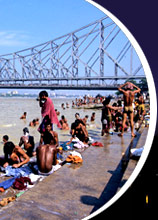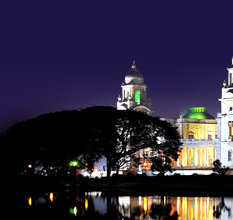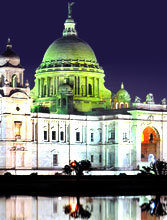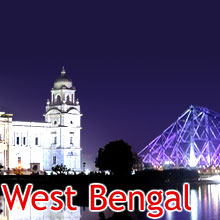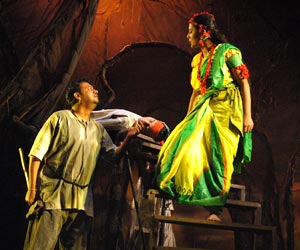 Bengal has always been famous for its art and culture. Bengali theatre has made an immense contribution towards the popularity of the state's intellectual aura and its rich art and cultural lineage. Though the theatre art is being practiced in Bengal since 1770s, its contemporary form has the strings of origin attached with the Indian freedom struggle. Though it started as private entertainment in the early 19th century, it later served as a major tool in the Indian freedom struggle. The development of Bengali theatre actually took place for the purpose of being used as a tool of resentment and expression during British Raj.
Bengal has always been famous for its art and culture. Bengali theatre has made an immense contribution towards the popularity of the state's intellectual aura and its rich art and cultural lineage. Though the theatre art is being practiced in Bengal since 1770s, its contemporary form has the strings of origin attached with the Indian freedom struggle. Though it started as private entertainment in the early 19th century, it later served as a major tool in the Indian freedom struggle. The development of Bengali theatre actually took place for the purpose of being used as a tool of resentment and expression during British Raj.Though the advent of TV and other faster means of mass communication have subdued the theatre culture, in terms of popularity, the art has not yet vanished from the arena of entertainment completely. Even today, there are numerous theatre groups in West Bengal, divided into Kolkata-based theatres and rural theatres. The only difference amongst these groups is funding and expertise. While Kolkata-based theaters are well funded and maintained, the rural theatres are gradually expiring from lack of amenities and funds. The latter, influenced by 'Jatras' - the age old regional Bengali Theatre, mainly promote social awareness.
The most popular Bengali theaters are Star Theatre, Academy of Fine Arts, Rabindra Sadan, Nahabat and Girish Manch. These theaters, other then development and social awareness plays, also explore socio-political & financial awareness issues. Bengali Theatre has earned a respectable name for itself in the theatre and performing art fraternity. Many famous actors, like Uttpal Dutta and Jaya Bhaduri, have worked for it. Other people, whose contribution to Bengali theatre, can't be ignored are Girishchandra Ghosh, Rabi Roy, Sisir Bhaduri, Badal Sircar, Shobha Sen and Soumitra Chatterjee.

